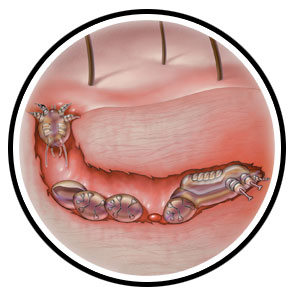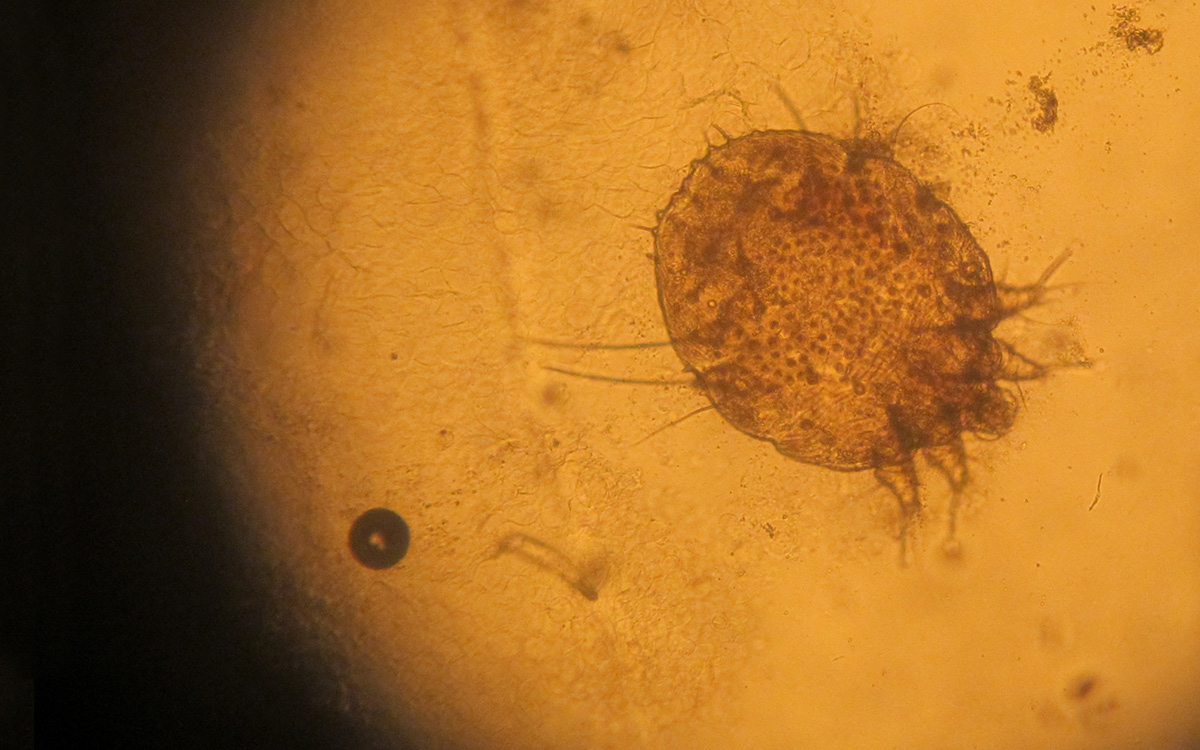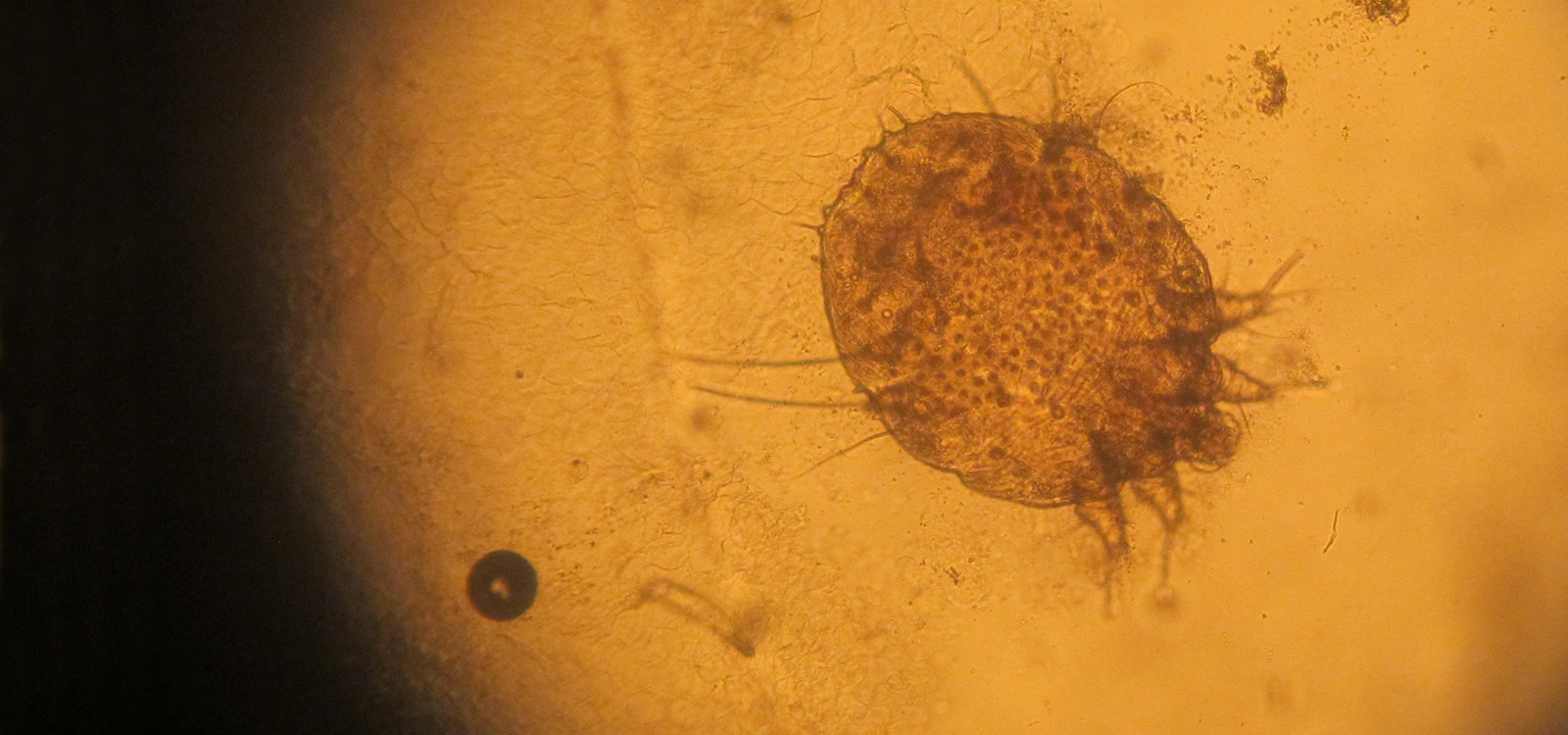What you should know
Risks for transmission
- Transmission occurs primarily during close sexual and non-sexual contact
- Scabies can live for three days in the bedding, towels and clothes of an infected individual. These items can be a source of transmission.
Symptoms
- Within three to four weeks of infestation, symptoms can include intense night-time itchiness and a reddish rash.
- The lesions are usually in the hands, wrists, armpits, waist, nipples, around the belly button, and in the male genitalia.
- With recurrences, the same symptoms occur, but more rapidly, usually within hours of infestation.

Testing
- Taking a skin scraping of the burrow to remove the mite
- The Burrow Ink Test (BIT) as scabies burrows under the skin retain pen ink
Treatment
- Treatment consists of a medical cream or shampoo; special consideration is given to infestations in the eyelashes. If the first treatment does not work it can be repeated after one week.
- All household contacts and recent sexual partners within the past month should be treated to prevent re-infestation.
- Clothing, bedding and other possible contaminated items should be washed or dry cleaned, or bagged for three days to one week. Items that cannot be washed or bagged should be vacuumed.
Complications
- Persistent scratching of irritated skin can cause a secondary bacterial infection.
- Severe infections are commonly seen in people with compromised immune systems: the skin can become scaly or crusty, requiring more complex and aggressive treatment.

